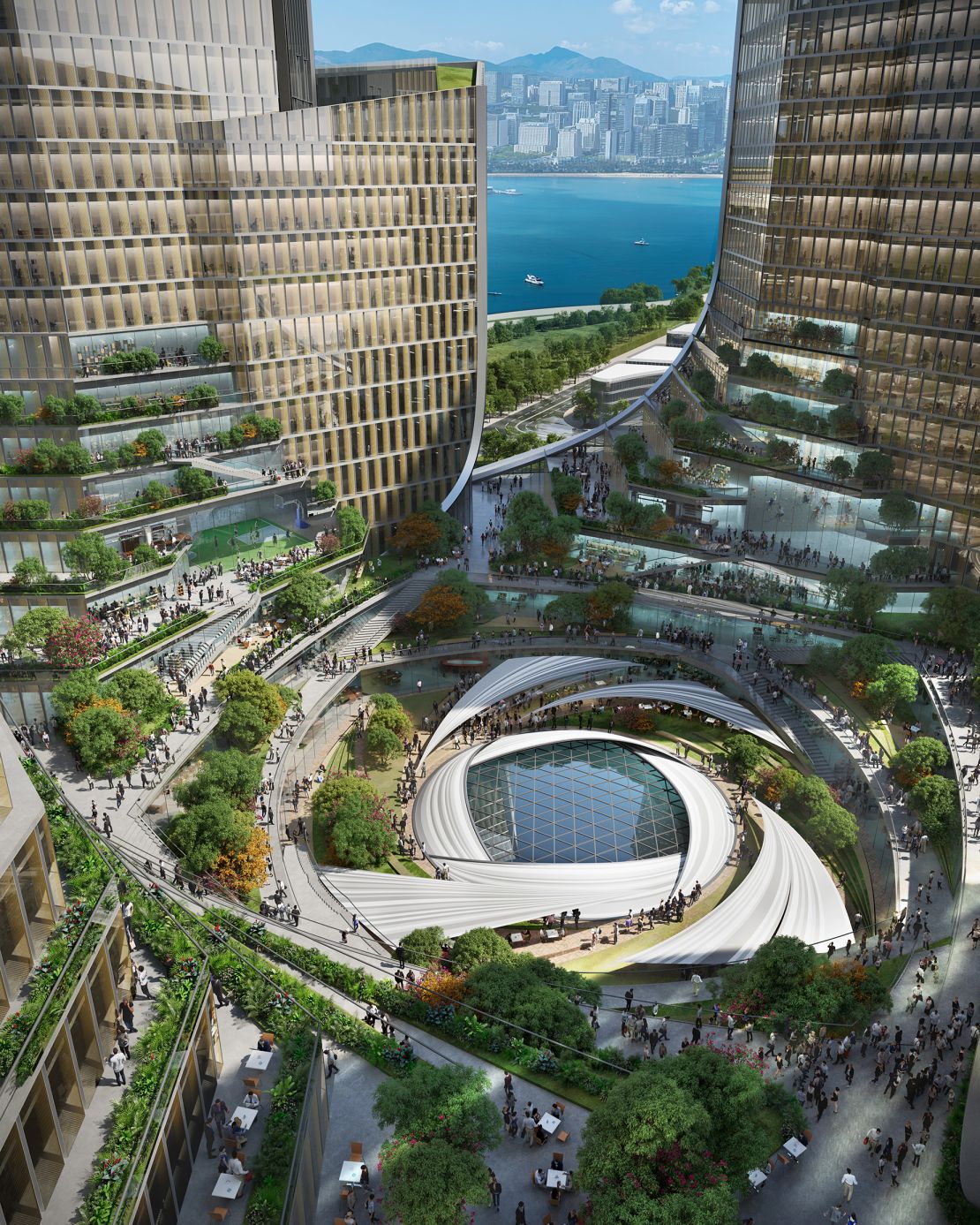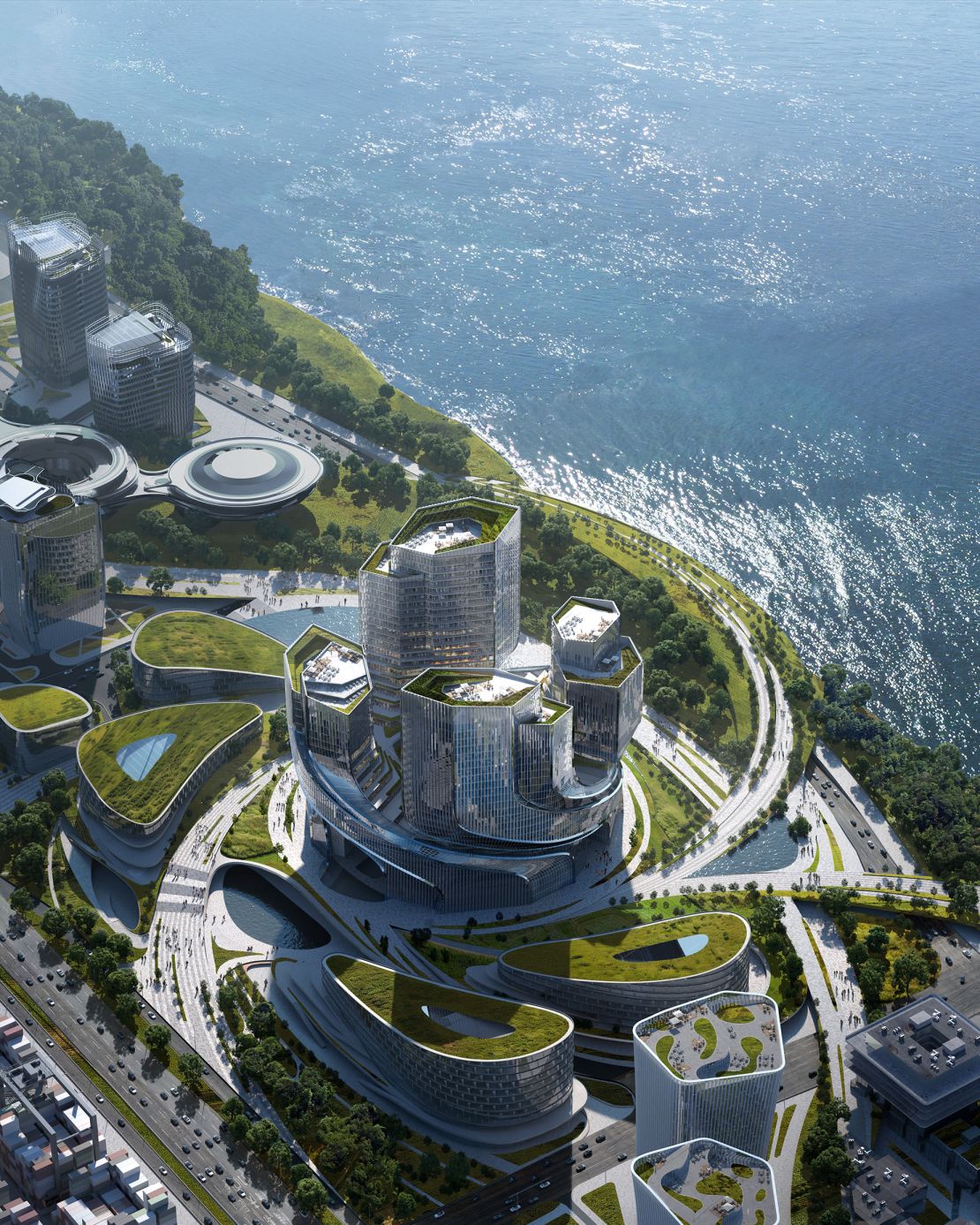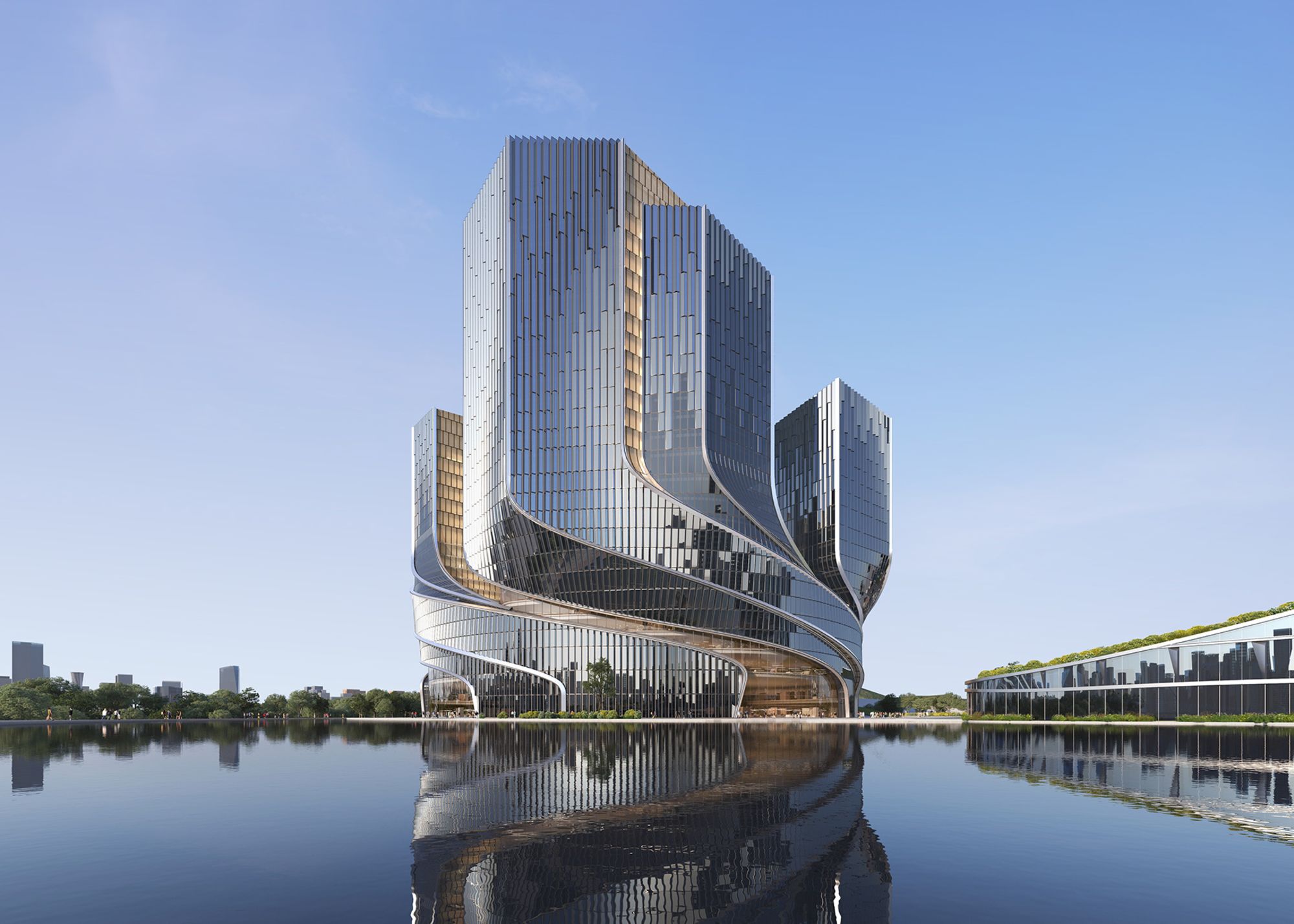The architects behind Chinese tech giant Tencent’s vast new campus unveiled their plans for the site on Thursday, describing their helix-inspired centerpiece as the “headquarters of the future.”
Set to accomodate over 23,000 employees across nearly 500,000 square meters (5.38 million square feet), the campus will be almost twice the size of Apple’s California headquarters when it opens in five years’ time.
Digital renderings of the design, shared exclusively with CNN by architects Büro Ole Scheeren, show four towers spiraling out from an open central space dubbed the “Vortex Incubator.” The landmark structure will become the focal point of an ambitious — and largely car-free — “future city” being built by Tencent, owner of messaging services WeChat and QQ, in the southern Chinese city of Shenzhen.
Speaking to CNN via video call, the architecture firm’s founder, Ole Scheeren, said his building’s “swirling vortex geometry” will create an “ecosystem where everything comes together, where work merges into a very collaborative interactive environment.”

The German architect’s vision was chosen by Tencent, China’s most valuable publicly traded company, following an international design competition.
The lower floors of the scheme, which is named Tencent Helix, connect the office towers via a large lobby and communal educational, recreational, sports and fitness facilities, including basketball, tennis and badminton courts. At ground level, restaurants and shops will erode the distinction between public and private space
This layout means that the building “doesn’t have a front and a back,” said Scheeren, who is known for co-designing Beijing’s famous CCTV Headquarters. He added that the structure’s appearance will vary depending on which angle it is viewed from: “It remains very recognizable, but it changes quite a lot in a subtle way.”
City within in a city
First unveiled by Tencent in 2020, the wider neighborhood — previously known as “Net City” — is being built on a stretch of reclaimed land jutting out into the Pearl River estuary. It will connect to the rest of Shenzhen via ferries and the city’s subway system. (And although the district is “predominantly car free,” Scheeren said, employees will be able to access Tencent’s headquarters via road bridges linking to parking spaces and drop-off points.)
The technology firm’s headquarters will be one of dozens of structures, including schools and public amenities, on the site. While some of the buildings are already under construction, others have not yet had their designs unveiled.

To create a sense of cohesion between the new headquarters and its surroundings, Scheeren’s helix motif — which he said evoked galaxies and bands of cloud around the eye of a storm — will extend into a network of pedestrian pathways spiraling out from the centerpiece structure. The new master plan also includes an undulating path that Scheeren said may look “something like a High Line 2.0.”
“I found a way, without changing any of the existing buildings, to strategically engage them through a pedestrian network and landscaping — and, in a way, to use the public space as a means to tie the whole master plan together,” he added.
Reimagining ‘gimmicky’ corporate campuses
The German architect stressed that incorporating nature into his design would offer “connection to outdoor space … but at the same time remain a really functional workspace.”
The building will be orientated to benefit from natural ventilation, while a “sponge city” concept — whereby rain is absorbed or captured to protect against storm surges or for use in irrigation — will be employed to reduce water waste.
Despite Tencent Helix’s huge floor area, its relatively compact shape sets it apart from many sprawling US tech campuses, which Scheeren described as being “suburban” in design. “I wanted to create something that is more urban,” he said.
The architect added that corporate campuses has become “gimmicky,” and that he favored offices that “recognize you as a serious worker and not somebody who’s just hanging around on a beanbag the entire day.”
“The office is no longer just a cubicle — but it’s also not a children’s playground,” he said, adding that “to create environments that implicitly tell you can never leave is also a highly problematic approach.”
Tencent Helix is expected to open in time for the technology firm’s 30th anniversary in 2028 and will replace the company’s main Shenzhen office as its global headquarters.




